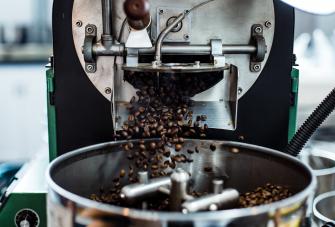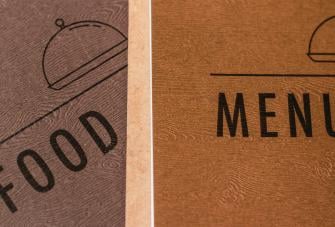Restaurant KPIs: Key Performance Indicators for Business Success
Running a successful restaurant is more than just having delicious dishes on your menu—it's about monitoring the right metrics, known as key performance indicators (KPIs).
Every restaurant owner and manager should pay attention to these restaurant KPIs. They help you make informed decisions that can streamline operations and boost your profits.
Keeping an eye on these metrics can also help you catch potential problems before they escalate into bigger issues.
So, which restaurant KPIs are right for you? In this complete guide, we'll highlight some of the most crucial restaurant KPIs you should track. From profit margins to customer satisfaction and employee productivity, we'll explain each metric's significance and how to track them effectively. We'll cover three main categories:
- Revenue and profitability metrics
- Operational and performance metrics
- Customer and guest metrics
Let's get started.
Revenue and profitability metrics
Revenue and profitability metrics are like the financial pulse of your restaurant—they give you a clear picture of how well your business is doing in terms of making money and managing expenses. By keeping an eye on these metrics, you can see what's driving your profits and where you might be losing money unnecessarily. This insight is crucial for making smart decisions that help your restaurant grow steadily and sustainably over time.
Gross profit margin
The gross profit margin is a key indicator of your restaurant's financial efficiency. It shows the percentage of total sales revenue that your restaurant retains after deducting the direct costs of producing goods or services, such as food and labor costs. A higher gross profit margin suggests that your restaurant is operating more efficiently financially.
To calculate the gross profit margin, you use the following formula:
Gross Profit Margin = (Gross Profit / Total Sales Revenue) * 100
Here's how you do it:
- Subtract the Cost of Goods Sold (COGS) from your total sales revenue to get the Gross Profit.
- Then, divide this Gross Profit by the Total Sales Revenue.
TIP: Check our complete guide on restaurant profit margins for more information!
Net profit margin
Your restaurant’s net profit margin tells you how much profit you're making from each dollar of sales after deducting all expenses. Unlike gross profit margin, which only considers direct costs like food and labor, net profit margin takes into account all operational expenses, giving you a more accurate view of your bottom line.
To calculate the net profit margin, you can use the following formula:
Net Profit Margin = (Net Profit / Total Sales Revenue) * 100
Here's the step-by-step process:
- Subtract Total Expenses (which includes COGS, labor costs, overhead costs, and other operating expenses) from Total Sales Revenue to find the Net Profit.
- Then, use the formula above to determine your net profit margin.
Average covers
Average covers, a fundamental metric in the restaurant industry, represent the daily or per-service period average number of customers served, whether it's during breakfast, lunch, or dinner. Keeping a close eye on your restaurant's covers provides valuable insights into customer traffic and demand fluctuations over time. By analyzing these trends, you can make informed decisions about staffing levels and inventory management.
Calculating average covers is straightforward and provides valuable insights into your restaurant's performance. You can use the following formula:
Average Cover = Total Sales / Total Number of Customers Served
Simply divide your total sales by the total number of customers served over a specific period, such as a day, week, or month. This calculation gives you an understanding of the average amount each customer spends during their visit.
Analyzing average covers allows you to identify spending patterns among your customers. With this information, you can devise strategic pricing strategies, plan effective promotions, and implement upselling techniques to enhance revenue generation. By optimizing your menu pricing and promotional activities based on average covers, you can maximize profitability and improve overall business performance.
#4 Cost of Goods Sold (COGS)
The Cost of Goods Sold (COGS) represents the direct expenses linked to producing the goods sold by a restaurant, typically comprising food and beverage costs. Monitoring COGS is essential for efficiently managing restaurant inventory and ensuring menu items are priced profitably. You can calculate the Cost of Goods Sold (COGS) for your restaurant using the following formula:
COGS = Opening Inventory + Purchases - Closing Inventory
Here's what each term represents:
- Opening inventory: The value of your stock (food and beverage) at the beginning of the accounting period.
- Purchases: The total value of additional stock acquired during the accounting period.
- Closing inventory: The value of the remaining unsold stock at the end of the accounting period.
By subtracting the value of closing inventory from the sum of opening inventory and purchases, you can determine the total cost of goods sold during the period. This calculation helps you understand your restaurant's direct expenses associated with producing the items sold, enabling better inventory management and pricing strategies.
Food cost percentage
Food cost percentage is a vital profitability indicator that shows the proportion of total sales revenue spent on food ingredients. Monitoring this metric is crucial for evaluating the cost-effectiveness of your menu items and maintaining a competitive pricing strategy. You can calculate the food cost percentage using the following formula:
Food Cost Percentage = (Food Cost / Selling Price) * 100
For example, if a dish costs $5 to make and is sold for $20, the food cost percentage would be calculated as follows:
Food Cost Percentage = (5 / 20) * 100 = 25%
This percentage indicates that 25% of the selling price is spent on food ingredients. Analyzing food cost percentage helps you determine if a dish is appropriately priced relative to the cost of its ingredients, enabling you to optimize your menu pricing strategy for profitability.
Cash flow
Cash flow represents the net amount of cash and cash equivalents moving into and out of your restaurant business. This key performance indicator (KPI) is essential for evaluating your business' liquidity, solvency, and overall financial health.
The formula for calculating cash flow is:
Cash Flow = Cash Inflows - Cash Outflows
In simpler terms, it's the money coming into your business minus the money going out. If the result is positive, your business has a positive cash flow, indicating that more cash is flowing into the business than out. Conversely, if the result is negative, your business has a negative cash flow, suggesting that more cash is going out than coming in.
It's important to note that cash flow is distinct from profitability. A profitable business can still face challenges if its cash flow is negative, often due to timing differences between inflows and outflows. This discrepancy underscores the significance of closely monitoring this restaurant metric to ensure the financial stability and sustainability of your business.
Prime costs
Prime costs represent the sum of the two most significant expenses for a restaurant: the cost of goods sold (COGS) and labor costs. By closely monitoring your prime costs, you can effectively manage both goods and labor, ensuring the profitability and sustainability of your business.
Calculating prime costs involves adding up two major expense categories: the Cost of Goods Sold (COGS) and total labor costs. Here's the formula:
Prime Cost = COGS + Total Labor Costs
COGS includes the costs of all the ingredients used in preparing the food and beverages sold, while Total Labor Costs encompass all expenses related to your employees, such as wages, benefits, and payroll taxes. By keeping track of your prime costs, you can gain insights into your restaurant's cost structure and make informed decisions to optimize profitability.
Average check size
Average check size, also known as average ticket size, represents the average amount spent by customers on each transaction at your establishment. This restaurant metric offers valuable insights into customer spending behavior and the effectiveness of your menu pricing strategies. By analyzing and optimizing the average check size, you can strategically implement upselling or cross-selling techniques to increase revenue per customer.
Calculating the average check size is straightforward. Here's the formula:
Average Check Size = Total Sales / Number of Transactions
In this equation, Total Sales refers to the total revenue generated by your restaurant during a specific period, while the Number of Transactions represents the total number of bills issued to customers within the same period. This calculation provides a clear understanding of the average spending per transaction, enabling you to identify opportunities for revenue growth and enhance your restaurant's profitability.
Break-Even Point
The break-Even point is a pivotal financial metric that indicates the minimum revenue threshold your restaurant must reach to cover all its costs—both fixed and variable. It serves as a clear target for financial sustainability, providing restaurateurs with insight into the sales volume required to start generating a profit.
To calculate the break-even point, you can use the following formula:
Break-Even Point (in units) = Total Fixed Costs / (Selling Price per Unit – Variable Cost per Unit)
For example, let's consider a restaurant with the following costs:
- Total Fixed Costs per month (e.g., rent, insurance, salaries): $10,000
- Average Selling Price per meal: $20
- Average Variable Cost per meal (e.g., food ingredients, utilities): $5
Using the formula: Break-Even Point = $10,000 / ($20 – $5) = 666.67 meals
This means the restaurant needs to sell approximately 667 meals in a month to break even. Any meals sold beyond this number would result in a profit.
Operational and performance metrics
Running a successful restaurant involves operating like a well-oiled machine, and achieving this requires monitoring the right operational metrics. Key performance indicators (KPIs) such as RevPASH (Revenue Per Available Seat Hour), table turnover rate, and food waste can provide valuable insights into how efficiently you manage your time and resources. By tracking these metrics, you can streamline your restaurant operations and enhance overall performance. Now, let's look into these operational and performance metrics and explore strategies for improvement.
Revenue per Available Seat Hour (RevPASH)
RevPASH is a key performance metric that measures the revenue generated for each seat in your restaurant per hour. By tracking RevPASH, you can assess your efficiency in turning tables and optimizing seat utilization, leading to increased sales, improved service delivery, and enhanced customer experience. RevPASH is calculated using the following formula:
RevPASH = Total Revenue / (Number of Seats x Opening Hours)
Here's what each component represents:
- Total revenue: Total sales generated by your restaurant during a specific period.
- Number of seats: The total seating capacity of your restaurant.
- Opening hours: The total number of hours your restaurant was open and serving customers in the same period.
For example, suppose your total revenue for a day was $20,000, your restaurant has 50 seats, and it was open for 10 hours. Then:
RevPASH=$20,000(50 seats×10 hours)=$40RevPASH=(50 seats×10 hours)$20,000=$40
This means that each seat in your restaurant generated an average of $40 per hour on that day.
Turn time or table turnover
Turn time, also referred to as table turnover, measures the average duration customers spend at a table, starting from when they are seated until they depart. This crucial Key Performance Indicator (KPI) offers insights into how efficiently your restaurant manages its seating capacity, impacting the number of covers served and overall revenue generation.
To calculate table turnover or turn time, use the following formula:
Turn Time = Total Dining Time of All Parties / Number of Parties
For example, if your restaurant had 20 parties dine over the course of an evening, with a total combined dining time of 40 hours, the calculation would be:
Turn Time = 40 hours / 20 parties = 2 hours
This indicates that, on average, each table is turned over every 2 hours, providing valuable insight into your restaurant's efficiency in managing table occupancy and service flow.
Inventory turnover ratio
Inventory turnover ratio measures how many times inventory is sold or used within a specified period. A high turnover ratio can signify effective menu engineering and waste control, while a low ratio may indicate overstocking or other issues.
To calculate your restaurant’s inventory turnover ratio, you'll need two pieces of information: the Cost of Goods Sold (COGS) and the Average Inventory value. Here’s the formula:
Inventory Turnover Ratio = COGS / Average Inventory
For example, if your COGS for a month was $20,000 and your average inventory value for that month was $5,000:Inventory Turnover Ratio= $20,000 /$5,000=4
This indicates that you sold and replaced your inventory four times during that month. A higher ratio suggests more frequent sales and turnover of inventory, typically indicating fresher ingredients and lower holding costs.
However, it's important to strike a balance because an excessively high ratio may lead to stockouts and lost sales. It's crucial to find the optimal turnover ratio for your restaurant's specific needs.
Total sales by server
This restaurant KPI tracks the total revenue generated by each server in your establishment. Monitoring sales by server allows you to identify top performers and pinpoint areas where additional training may be needed.
Understanding the sales abilities of each server enables you and your managers to assign shifts effectively, balance workloads, and design incentive schemes to motivate staff and maximize sales. While most restaurant POS systems can track this metric automatically, you can manually calculate it using the following formula:
Total Sales by Server = Sum of All Sales Made by a Specific Server
For example, if Server A worked three shifts in a week and made $500, $600, and $700 in sales, respectively: Total Sales by Server A = $500 + $600 + $700 = $1800
This indicates that Server A generated $1800 in sales for that week. By comparing this with sales made by other servers, you can identify top performers and those who may require additional training.
Food waste
Food waste in a restaurant refers to the amount of food that is purchased but ends up not being consumed by customers, often due to spoilage, over-preparation, or plate waste.
Calculating food waste in a restaurant involves tracking various elements, including kitchen waste, plate waste, and spoilage.
Once you've gathered data on these factors over a specific period, you can determine your total food waste using the following formula:
Total Food Waste = kitchen waste + plate waste + spoilage
By adding together the quantities of kitchen waste, plate waste, and spoilage, you'll obtain a clear picture of the total amount of food wasted in your restaurant. This information serves as a starting point for identifying areas where waste can be reduced, helping you save money and operate a more sustainable establishment.
Customer and guest metrics
In addition to monitoring financial and operational metrics, it's essential to examine customer-centric KPIs for your restaurant. By doing so, you gain valuable insights into your establishment's performance from your patrons' perspective.
#15 foot traffic or guest count
Looking for an easy way to gauge your restaurant's popularity? Foot traffic, also known as guest count, is a valuable KPI to consider.
This metric not only helps you measure your restaurant's overall popularity but also allows you to identify peak hours, enabling you to schedule staff efficiently. Additionally, tracking foot traffic provides insights into the effectiveness of marketing campaigns and seasonal trends, empowering you to plan and forecast accordingly.
Your hospitality POS system may track foot traffic automatically, or you can utilize people counters for this purpose. Alternatively, if you're conducting manual tracking, you or your staff will need to count the number of customers entering your restaurant over a specific period (such as a day, week, or month).
For example, if you had 75 customers on Monday, 85 on Tuesday, and 90 on Wednesday:
Foot Traffic=75 (Monday)+85 (Tuesday)+90 (Wednesday)=250 customers
You can then compare this data with previous time periods, such as the same period last year, to assess whether your foot traffic is improving or not. This comparison provides valuable insights into your restaurant's performance and popularity over time.
Customer Satisfaction Score (CSAT)
While CSAT isn't specific to the restaurant industry, it's still a valuable KPI to track as it provides insights into your customers' satisfaction levels.
To calculate the Customer Satisfaction Score (CSAT), follow these steps:
- Survey your customers, asking them to rate their satisfaction with your restaurant on a scale. This scale typically ranges from 1 to 5 or 1 to 10, with higher scores indicating greater satisfaction.
- Collect the scores from all the respondents.
- Determine the percentage of customers who gave a score of 4 or 5 (if using a 5-point scale) or 9 or 10 (if using a 10-point scale).
The formula to calculate CSAT is:
CSAT (%) = (Number of Satisfied Customers (4 and 5 ratings) / Total Number of Survey Responses) * 100
For example, if 80 out of 100 survey respondents gave you a score of 4 or 5: CSAT (%)=(80100)×100=80%
This means that 80% of your customers reported being satisfied with their experience. Tracking CSAT over time allows you to gauge the effectiveness of your efforts in meeting customer expectations and improving overall satisfaction levels. It can also help to improve restaurant staff efficiency.
Walk-ins vs. reservations
Comparing the ratio of walk-ins to reservations in your restaurant provides valuable insights into your business operations and customer behavior. This metric can illuminate dining preferences and inform decisions regarding staffing, restaurant management for tables, and marketing strategies. To calculate this restaurant's KPI:
- Add up the number of customers who made reservations and dined at your restaurant within a specific period (e.g., a day, week, month).
- Add up the number of customers who walked in without a reservation during the same period.
Calculate the ratio by dividing the number of walk-ins by the number of reservations:
Walk-ins vs. Reservations Ratio = Number of Walk-Ins / Number of Reservations
For example, if you had 60 walk-ins and 40 reservations on a given day:
Walk-ins vs. Reservations Ratio = 60 / 40 = 1.5
This means you had 1.5 walk-ins for every reservation. Analyzing this data can help forecast staffing needs, adjust reservation policies, and optimize table turnover to enhance overall restaurant efficiency.
Take control with a responsive restaurant POS
Host with confidence when you rely on Epos Now’s dedicated restaurant POS. Process multichannel sales (from in-house, takeaway, and delivery) all in one place!
How can a restaurant POS help with KPIs?
A good restaurant POS system is like having a super-efficient sous chef who keeps everything running smoothly and helps you whip up the tastiest dishes—KPIs included!
- Sales and revenue metrics: Think of your POS as the cashier that automatically tallies up all your sales from your payment processing services. It gives you the lowdown on which menu items are flying off the shelves and when your busiest hours are, helping you figure out your profit margins and average check sizes.
- Inventory management: No more guesswork with your ingredients! Your POS can keep track of what's flying off the shelves and what's gathering dust in the pantry. That means you can calculate metrics like food cost percentage and know exactly when to restock.
- Table turnover and guest count: By keeping tabs on guest counts and turnover rates, your POS helps you make sure everyone gets a seat at the table without long waits.
- Employee performance: Ever wonder who your star servers are? Your POS does! It can track sales by individual staff members, helping you spot your MVPs and even out the workload for everyone.
- Customer satisfaction surveys: Your POS system can also be your trusty survey collector. With integrated survey tools, it prompts your customers for feedback after their meal, giving you a heads-up on how satisfied they are and where you can improve.
- Reporting and analytics: With its reporting and analytics tools, your POS crunches the numbers and gives you easy-to-understand reports. That way, you can see how you're doing over time and make smart decisions to keep your restaurant thriving.
So, there you have it! Your restaurant's secret ingredient for cooking up success: a trusty POS system that helps you keep track of all those important KPIs.
Final thoughts
So, there you have it—your crash course in restaurant KPIs! From tracking sales and managing inventory to keeping tabs on customer satisfaction and employee performance, we've covered it all.
Remember, the key to running a successful restaurant isn't just about serving great food—it's about keeping an eye on the numbers that really matter. By paying attention to these metrics, you can make smarter decisions, streamline your operations, and keep your customers coming back for more.
And let's not forget about your trusty POS system—it's like having a secret weapon in your kitchen, helping you stay on top of everything from reservations to revenue.
So, whether you're a seasoned restaurateur or just starting out, understanding and leveraging KPIs is essential for driving success in the competitive world of dining. Keep tracking those numbers, stay focused on your restaurant goals, and here's to thriving restaurant success.
Ready to elevate your restaurant with a powerful POS system? Talk to our team today and streamline your operations!




